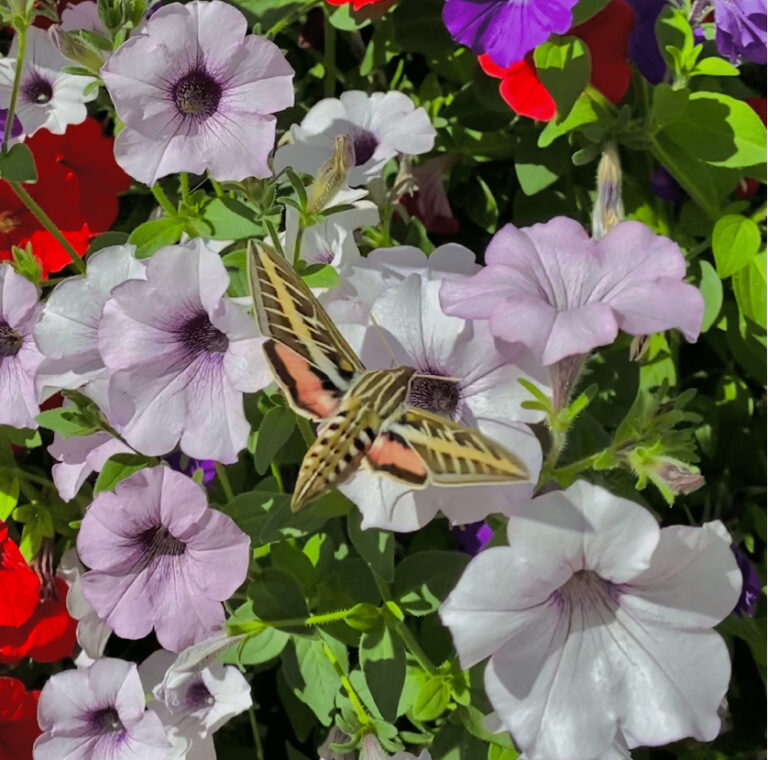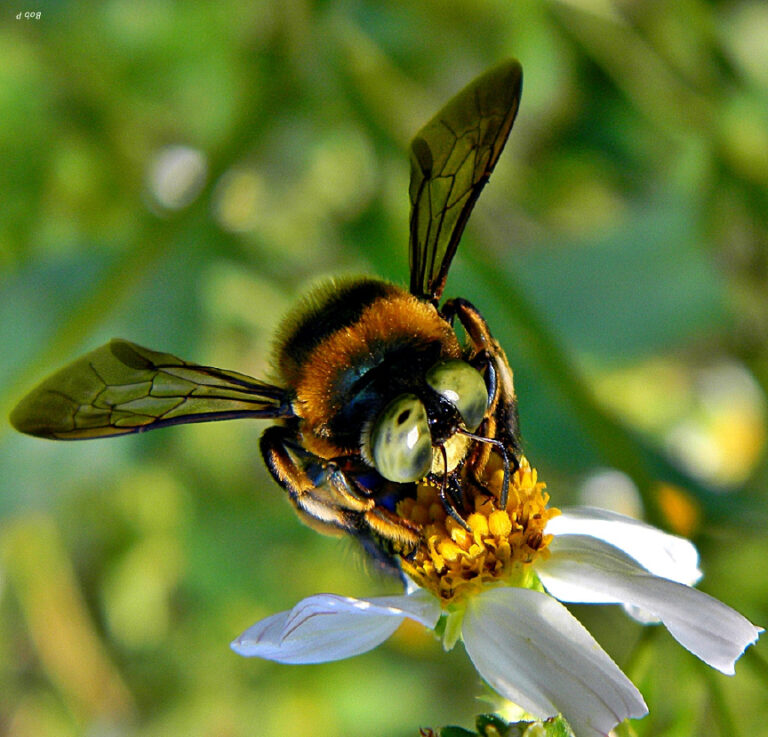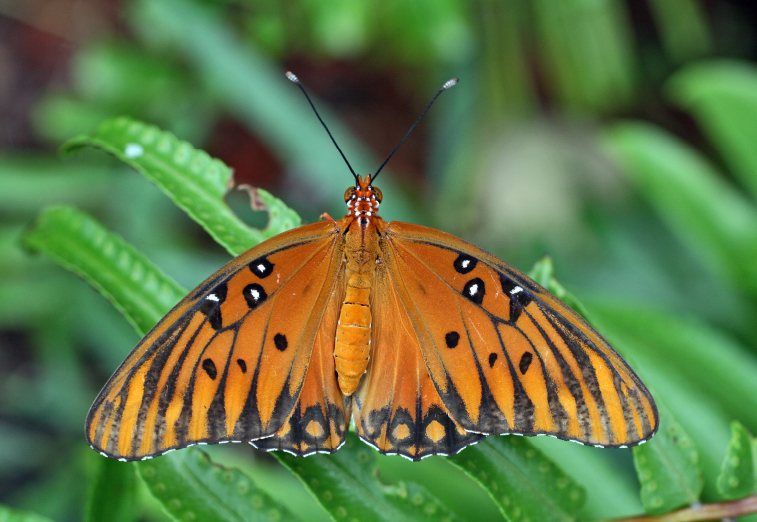Native Pollinators
English
Español
-
Pollination is the process that many fruit- and seed-producing plants use to reproduce and takes place when pollen from one flower is transferred to another. In some plants, pollen may be carried on the wind, but most plants depend on insects, hummingbirds, and some small mammals that rely on flowers for food. Along the entire length of the San Pedro Creek Culture Park, the reintroduction of native plants on the banks and native aquatic plants makes this downtown habitat a vital resource welcoming a variety of bees, butterflies, and other pollinators and wildlife.
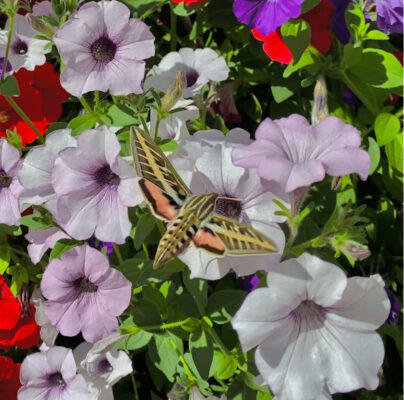
Photo: OttoYokohama, Courtesy: Wikimedia Commons (CC BY-SA 4.0). White-lined Sphinx Moth, Hyles lineata
This moth is one of the most distinctive in the United States. The forewing, which averages about 1-1/2 inches, is brown with white veining. The body is brown with lots of white streaking. The hindwings are salmon colored bordered by black.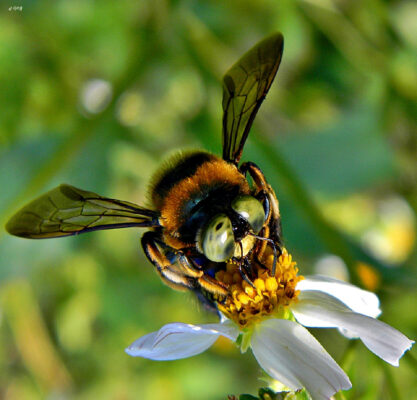
Photo: Bob Peterson, Courtesy: Wikimedia Commons (CC BY-SA 2.0). Southern Carpenter Bee, Xylocopa micans
This large bee is generally a metallic black that reflects light with blue or green tinges. Southern carpenter bees can collect pollen from a broad variety of plants, and they also have special abilities for pollination. They can rapidly vibrate to dislodge tightly held pollen, a process called buzz pollination.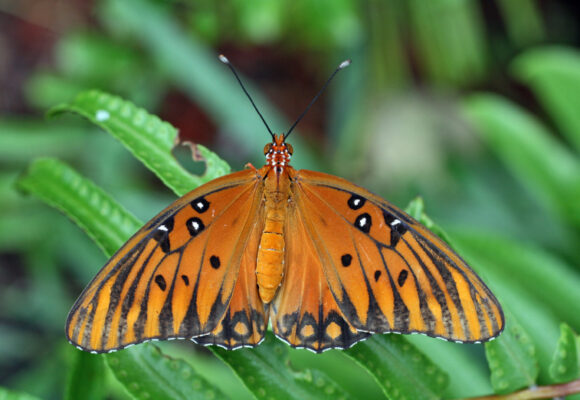
Gulf Fritillary, Agraulis incarnata Gulf Fritillary, Agraulis incarnata
The Gulf fritillary is a medium-sized butterfly with elongated forewings. The upper surface of the wings is bright orange with black markings. The forewing cell contains three black-rimmed white spots. The undersides of the wings are brown with elongated silvery-white spots. -
La polinización es el proceso que utilizan muchas plantas productoras de frutos y semillas para reproducirse, y tiene lugar cuando el polen de una flor se transfiere a otra. En algunas plantas, el polen puede ser transportado por el viento, pero la mayoría dependen de insectos, colibríes y algunos pequeños mamíferos que recurren a las flores como fuente de alimento. A lo largo de todo el San Pedro Creek Culture Park, la reintroducción de plantas nativas en las orillas y plantas acuáticas nativas hace que este hábitat urbano sea un recurso esencial que recibe una variedad de abejas, mariposas y otros polinizadores y fauna silvestre.

Photo: OttoYokohama, Courtesy: Wikimedia Commons (CC BY-SA 4.0). Polilla esfinge de líneas blancas, Hyles lineata
Esta polilla es una de las más distintivas de los Estados Unidos. Las alas delanteras, que tienen un promedio de 1.5 pulgadas, son de color café con vetas blancas. El cuerpo es café con muchas líneas blancas. Las alas traseras son de color salmón, bordeadas de negro.
Photo: Bob Peterson, Courtesy: Wikimedia Commons (CC BY-SA 2.0). Abeja carpintera del sur, Xylocopa micans
Esta abeja grande es generalmente de color negro metálico que refleja la luz con tintes azules o verdes. Las abejas carpinteras del sur pueden recolectar polen de una amplia variedad de plantas y también tienen habilidades especiales para la polinización. Pueden vibrar rápidamente para desprender el polen fuertemente adherido, un proceso llamado polinización por zumbido.
Gulf Fritillary, Agraulis incarnata Mariposa voladora del golfo, Agraulis incarnata
La nacarada del golfo es una mariposa de tamaño mediano con alas delanteras alargadas. La superficie superior de las alas es anaranjada brillante con marcas negras. La membrana del ala anterior contiene tres manchas blancas bordeadas de negro. La parte inferior de las alas es café con manchas alargadas de color blanco plateado.

